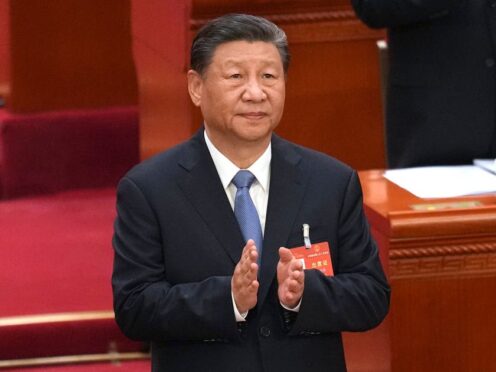China’s national legislature has wrapped up its annual session with the usual show of near-unanimous support for ruling Communist Party leader Xi Jinping’s vision for the nation.
The week-long event, replete with meetings carefully scripted to allow no surprises, highlighted how China’s politics have become ever more calibrated to elevate Mr Xi.
Monday’s agenda lacked the usual closing news conference by premier Li Qiang, the party’s second in command. The news conference has been held most years since 1988 and was the one time when journalists could directly question a senior Chinese leader.

The decision to scrap it emphasises Mr Li’s relatively weak status. His predecessors played a much larger role in leading key economic policies such as modernising state companies, coping with economic crises and leading housing reforms that transformed China into a nation of homeowners.
The nearly 3,000-member National People’s Congress approved a revised State Council law that directs China’s version of the cabinet to follow Mr Xi’s vision. The vote was 2,883 to eight, with nine abstentions.
Other measures were passed by similarly wide margins. The most nays were recorded for the annual report of the supreme court, which was approved by 2,834 to 44.
In brief closing remarks, Zhao Leji, the legislature’s top official, urged the people to unite more closely under the Communist Party’s leadership “with comrade Xi Jinping at its core”.
The party leaders who run the State Council used to have a much freer hand in setting economic policy, said Neil Thomas, a Chinese politics fellow at the Asia Society Policy Institute.
“Xi has been astonishingly successful in consolidating his personal hold over the party, which has allowed him to become the key decisionmaker in all policy domains,” he said.

As the party champions innovation and self-reliance in technology to build a modern, wealthy economy, it is leaning heavily on more overtly communist ideology that harkens to past eras. Mr Xi has fortified the party’s role across the spectrum, from culture and education to corporate management and economic planning.
“Greater centralisation of power has arguably helped Xi to improve central government effectiveness,” Mr Thomas said, “but the benefits may be outweighed by the costs of stifling political discussion, disincentivising local innovation and more sudden policy shifts.”
Developing “new quality productive forces” — a term coined by Mr Xi last September — emerged as a catchphrase at this year’s congress.
The term suggests a prioritising of science and technology as China confronts trade sanctions and curbs on access to advanced computer chips and other areas that the US and other countries deem to be national security risks.
On the diplomatic front, China kept Wang Yi as foreign minister. He had stepped back into the post last summer after his successor, Qin Gang, was abruptly dismissed without explanation after half a year in the job.

Analysts thought the Communist Party might use the annual congress to appoint a new foreign minister and close the book on an unusual spate of political mishaps last year that also saw the firing of a new defence minister after a few months in the job.
The Organic Law of the State Council was revised for the first time since its adoption in 1982. The revision calls for the State Council to “uphold the leadership of the Communist Party of China”. It also adds the governor of China’s central bank to the body.
Echoing words seen in just about every proposal, law or speech, it spells out that China’s highest governing officials must adhere to the party’s guiding ideology, which refers back to Marxism-Leninism and Mao Zedong Thought and culminates in Mr Xi’s philosophy on “Socialism with Chinese Characteristics for a New Era”.
Alfred Wu, an expert on Chinese governance at the National University of Singapore, said the revision institutionalises previous changes, making it harder to reverse them.
He described the congress as a “one-man show” that shows Mr Xi’s determination to create a system in which the party leads on policy, diminishing the role of the State Council and the legislature.
“His determination is very clear,” Mr Wu said. “He is willing to change everything.”
During this year’s congress, many provincial meetings were opened to the media for the first time since the Covid-19 pandemic, though they were carefully scripted with prepared remarks and none of the spontaneity once glimpsed in previous decades.
